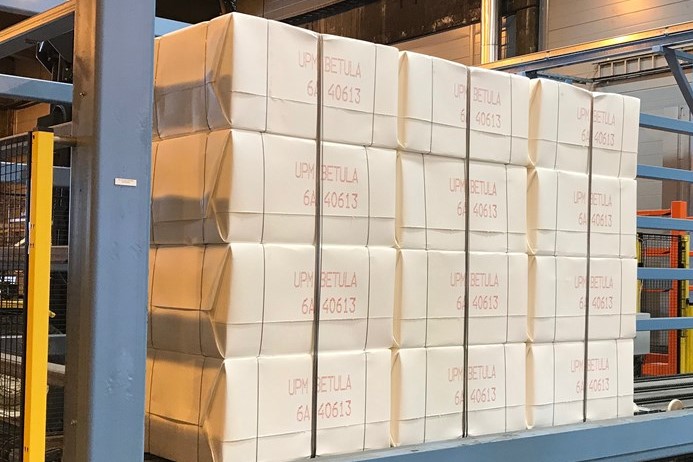 RFID is paving the way for full transparency
RFID is paving the way for full transparency
Transparency in the supply chain is essential to improve business efficiencies, meet stringent sustainability requirements and to scale up operations. Radio Frequency Identification (RFID) might be one technology that could streamline pulp deliveries and possibly create a new industry standard.
Across many industries, businesses are being seized by the digital wave and scrambling to update their systems and processes.
The pulp and paper industry is no exception and leading players are exploring different technologies to make the product cycle more transparent, using the opportunities that digitalisation brings to provide more value-added services. After a few years testing and piloting the process, Radio Frequency Identification – RFID – is one of the technologies that UPM Pulp is planning to use to improve the traceability of its pulp deliveries.
Identification serves traceability which serves transparency. Transparency equals smooth operations and logistics, real-time delivery and consumption data, correct stock data and product availability.
Customers and end users alike want to be aware of the origins of raw materials in their products throughout the supply chain. For pulp buyers improved traceability could bring significant savings.
“Today pulp traceability is increasingly required by customers and other parties in the supply chain due to certifications and regulations – for example relating to food safety and container weight control,” says Janne Neuvonen, Project Manager at UPM Pulp.
“We are currently building foundations for the utilisation of RFID technology and plan to produce the first tagged bales at the end of August. Our aim is to identify pulp units made up of pulp bales, trace these units along the supply chain and in future make the whole delivery as transparent as possible,” explains Janne.
Optimising the supply chain
The benefits that could be created with RFID are apparent in every step of the supply chain.
“Pulp units are identified when leaving the production mill and before shipping. That phase is mandatory. Authorities and transport companies require the exact number of units and their weight. Here the RFID technology minimises human error. Then we inform the destination port about the arriving units,” explains Janne.
The UPM Communication Papers business area has experienced the advantages of using RFID first hand as they have been receiving pulp deliveries tagged with RFID for nearly two years at the UPM Kaipola paper mill in Finland. After this pilot run, the system is now being implemented in UPM's other paper mills.
A longer term goal for UPM’s paper mills is to automate procedures – reducing manual work and human error. Identified stocks and transparency are an essential asset when optimising and managing incoming and outgoing traffic effectively and reliably. Streamlined warehouse management saves time and money, especially when demand and supply become erratic.
“In a hypothetical situation where there might be a shortage of pulp at our paper mills, real-time inventory visibility would make it easier to prioritise and channel material to the mills most in need,” says Kimmo Sell, Director, Raw Material Execution at UPM Communication and Specialty Papers.
“In addition, in the not too distant future, data on pulp quality carried by RFID tags could bring savings in paper production. When there is exceptionally high quality pulp available, it can be reserved and stored for the most demanding products. Real-time quality data can enable the adjustment of production parameters. That could mean lower energy or chemical usage in the production process,” Sell explains.
Creating an industry standard
A standardised and transparent tracking system would bring global communication and automated procedures a step closer. The future lies in lower barriers and more efficient processes. Data on deliveries, consumption and stocks will make the entire process exponentially smoother and faster.
So how far along are we on this road? Experiments to utilise RFID in the pulp and paper industry commenced in 2006 and it took roughly four years to develop suitable tags to be fixed to pulp units. Tags typically comprise an antenna for transmitting and receiving signals and an RFID chip. With each new generation of devices the advantages of this technology – the device’s read range and reliability – will improve even further.
“The pulp and paper industry is far less standardised than, for example, the automotive industry, partly because pulp as a material is quite challenging if you think about identification and tagging. Pulp is a dense material that contains quite a lot of water,” says Ville Kauppinen, the Managing Director of Turck Vilant, a company that provides RFID information systems for various industries.
The use of RFID would bring full value to pulp customers if there were common standards. That’s why UPM, together with some of the other leading pulp suppliers, is working on an initiative to create an industry-wide standard for RFID identification.
Text: Pekka Vänttinen
